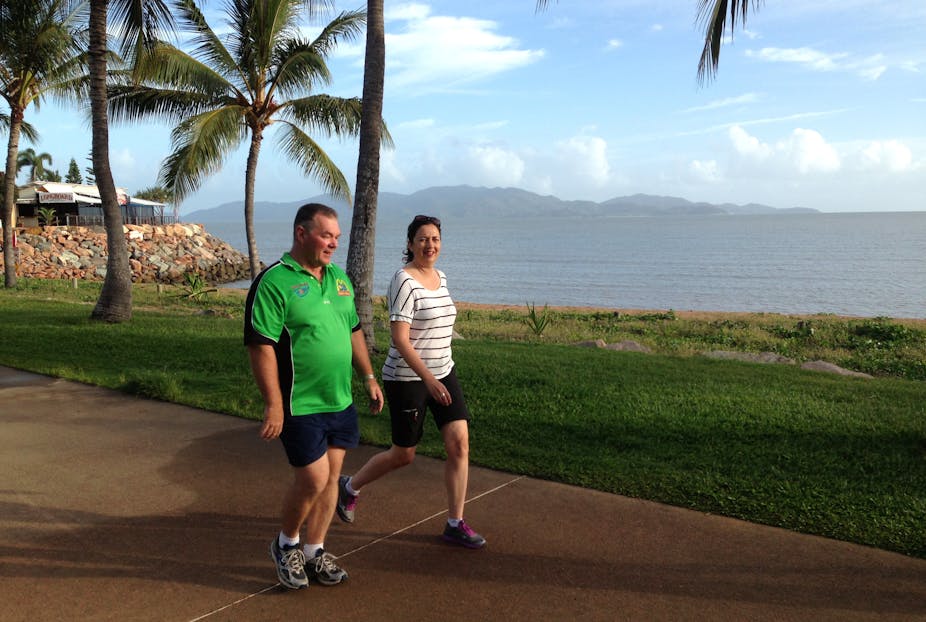If this month’s Queensland election is as tight as some polls suggest, voters in the state’s north – where Labor was reduced to just two seats after its huge 2012 election defeat – could prove decisive.
Overall, south-east Queensland looks likely to produce the biggest anti-government swings and the greatest number of seats changing hands at the January 31 poll.
But the importance of the north in this campaign is already obvious. The day after the election was called, Opposition Leader Annastacia Palaszczuk flew north to spend much of the day in Cairns, followed by Townsville on Thursday. Labor clearly hopes to pick up seats in both regional cities; other areas in the region pose a more formidable challenge.
The north Queensland region is home to 14 (out of 89) state electorates. Labor held 10 before 2012; the party now has just two (Mackay and Mulgrave, on the southern outskirts of Cairns). The governing Liberal National Party holds 10 seats, while Katter’s Australian Party holds two.
The big issues
What matters in the heavily populated south-east corner of Queensland – the Sunshine Coast, Brisbane and the Gold Coast – isn’t always what matters most in the rest of the state.

Law and order, and the criminal bikie gang laws that generated so many headlines on the Gold Coast, in Brisbane and even nationally, are not seen as being such major vote-changers here.
Apart from that, the big issues in the north in this year’s campaign are not so different from other parts of Queensland: jobs, health, education and the tensions between economic development and protecting the environment.
Of those, employment is the issue getting the most attention – and for good reason.
Townsville and Cairns have unemployment rates of 8.7% and 7.8% respectively. That compares to 6.1% in the Greater Brisbane area and 6.9% state-wide – the worst unemployment rate in Australia, together with Tasmania.
Jobs for the north
With the LNP and Labor both saying jobs are the number one issue in this election, it is worth examining what they mean.
For the LNP, jobs are tied to development – and that means pouring in hundreds of millions of dollars in state funds to ensure massive new coal mines in the Galilee Basin go ahead, along with backing an expansion of the Abbot Point coal terminal. The LNP is also a strong supporter of a “world-class” A$8 billion casino and resort proposed for Yorkeys Knob in Cairns.
Some in the tourism industry and among local communities are wary of the environmental and social impacts of such major projects, conscious of the need to protect the Great Barrier Reef.
Development is not always a winner for the conservatives. For example, the seat of Barron River, north of Cairns, typically records a substantial Greens vote that is influential in the vote count.
For Labor, its focus on “jobs” appears so far to be mainly an attempt to remind voters of the large job losses incurred in the public sector under the Newman government.
Labor also ties job losses to the asset leases planned by the LNP, with Palaszczuk acknowledging that popular opposition to the previous Labor government‘s own privatisation ventures played a part in its ousting in 2012.
In the north’s two largest cities, there are also the usual funding appeals for local projects, including a long-promised cruise terminal for Cairns and a sporting “super stadium” for Townsville.
The north’s independent streak
Queensland remains Australia’s most decentralised state. For those living outside Queensland, it’s worth remembering that Brisbane is as far away from Cairns as it is from Melbourne: about 1000 miles away in the old parlance.
That vast distance inspired the title of Geoffrey Bolton’s A Thousand Miles Away: a history of North Queensland to 1920. As that history explains, distance and isolation have traditionally fostered strong local loyalties, as well as a resentment of southern authority.
A separation movement has simmered and occasionally flared since the late 19th century. Even today, talk of secession still attracts media attention. The latest version of a North Queensland Party with that aim emerged in 2010. Both Bob Katter and Clive Palmer, as leaders of their eponymous parties and with an eye to electoral benefit, support a North Queensland state.

But the local support for making North Queensland its own state shouldn’t be over-stated. There is more that unites Queensland than divides it, including fierce rugby league State-of-Origin loyalty, the education system, other government institutions and political parties themselves.
Inter- and intra-state migration tend to dilute regionalism. So do local rivalries, including between Far North Queensland, centred on Cairns, and Townsville further south. There is also a divide between the coastal areas and the pastoral and mining west.
Still, many across the north retain an old suspicion that anyone from “down south” – basically south of Mackay - is a carpetbagger who may not have their interests at heart.
It’s a suspicion that Premier Campbell Newman and Labor’s Palaszczuk, who both come from suburban Brisbane seats, will be trying to overcome in this election.

